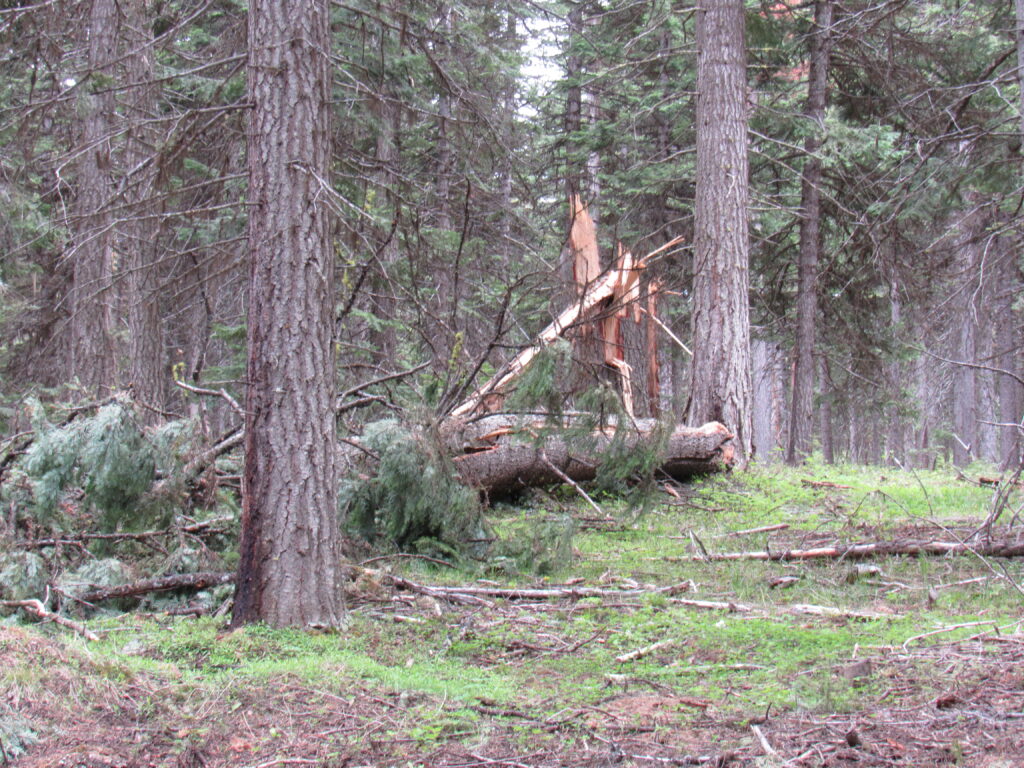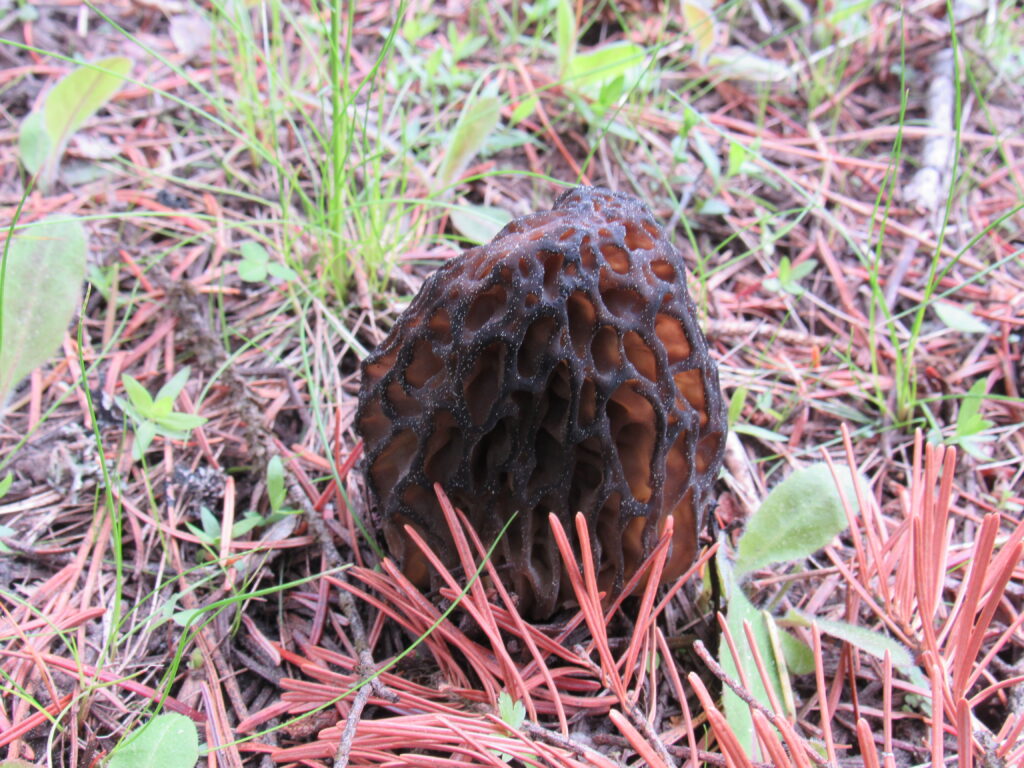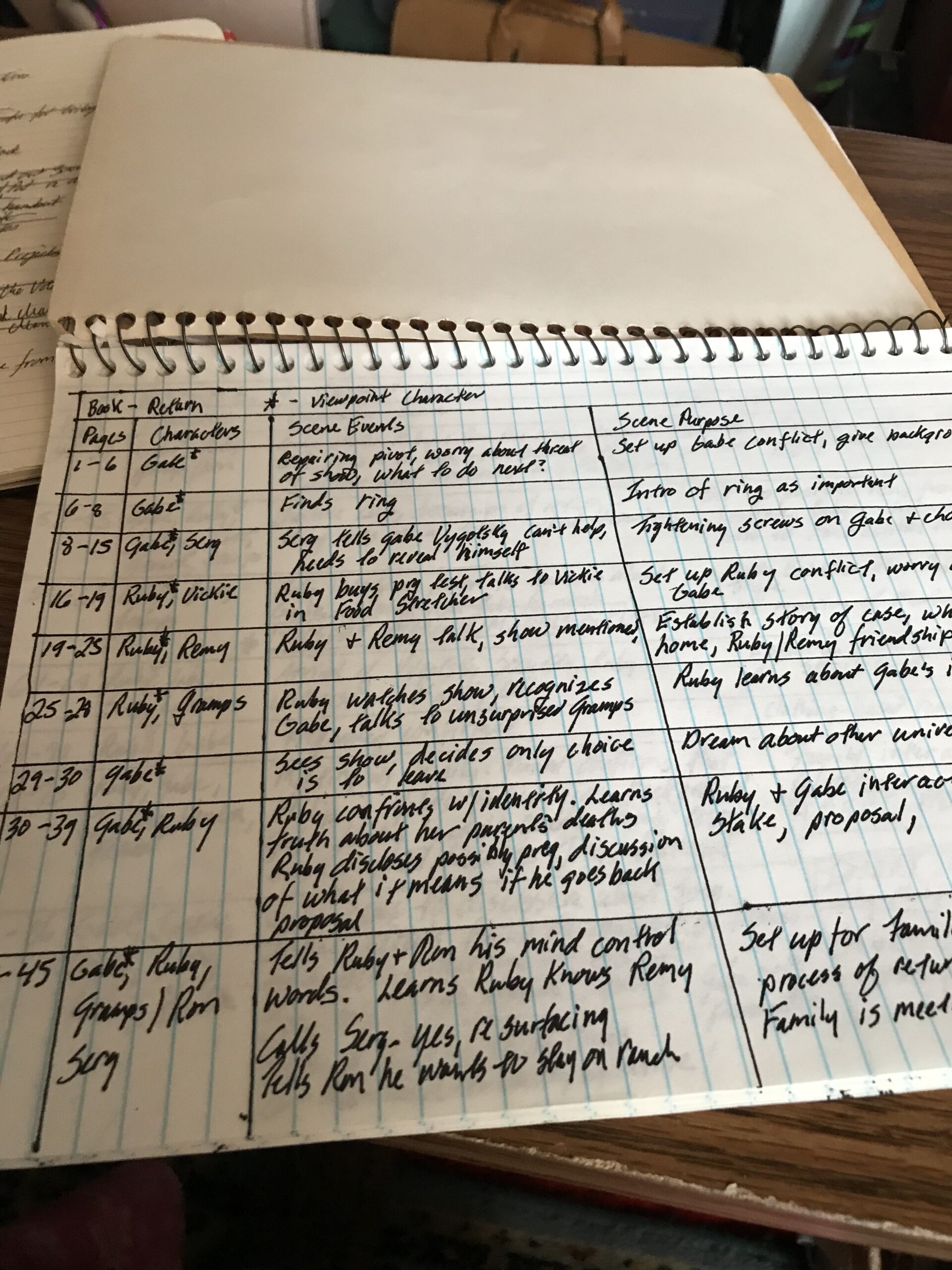Woodcutting 2025
May. 21st, 2025 03:15 pm
(recently fallen Douglas fir—of its own accord, not something we did! We can’t legally cut it up for firewood—besides the green needles, it’s too big in diameter. But it’s an example of what firewood cutting on the national forest is about.)
Getting old ain’t for sissies.
Never have I felt that statement more than in the past few months, when we’ve been working on a house to sell (long story, not going into it here) and now, with woodcutting season upon us.
Ten years ago, when we retired, we figured we’d be able to keep up the active lifestyle which also involved cutting our own firewood for maybe five years, perhaps eight years. Well, here we are, ten years later, embarking on our eleventh season cutting firewood in the spring. Sure, we ended up buying some last year for health reasons, but this year we’re back in the woods, racing to get our firewood cut for the season in the spring.
There are several reasons why we prefer to cut in the spring. It gives time for the wood to cure and burn better. The temperatures are better for several hours worth of exertion. There’s less danger of triggering a fire because everything’s still damp. And…there’s also the prospect of coming across these darlings.

But it’s also not just about harvesting wood and morel mushrooms. Spring flowers are popping up everywhere. We’re likely to see wildlife—on our last trip, we spotted sandhill cranes, deer, elk, mountain bluebirds, and turkeys.
It’s a chance to shake off the limitations of winter and get out into the national forest around us. See what changes the winter has brought—what trees survived the winter wind and snow, whether some of our backwoods roads are still clear, and just get out and explore everything around us.
Because of last year’s issues, we didn’t get into this section of the woods then. We generally don’t do the majority of our woodcutting in this area—it’s farther from town, therefore a longer drive and longer time spent cutting. As it is, even the closer locations end up taking most of the day. This area just adds a couple of hours of drive time on gravel roads to the time spent out.
Not that it isn’t rewarding. When we got out the first day, I exhaled heavily, not realizing until then the degree to which I’d been craving this expedition. Seeing familiar stringers of trees. Favorite rock formations. Little spots that hold meaning for the two of us, perhaps not to others. Here’s the grove where we spent several years thinning out dead white fir and Douglas fir. There’s the place where we kicked up a big herd of elk. That’s the backroad where we saw a big cinnamon black bear who took off running.
The spot where I worked on a particular book (there are several of those places) while the husband cut down a tree. The place where we had to resort to pulling the tree down with the pickup because it hung up on other trees (we don’t do that sort of thing anymore; that happened when we were younger than late sixties and early seventies). Favorite flower patches that bloom at a certain time of year.
We end up chasing the flowers and mushrooms to higher elevations. The closer location tends to hold snow longer, so we don’t go there right away. That spot also holds hunting season memories, where we camped for a couple of years with a friend (until a fall rain and wind storm knocked the tent’s center pole down and we had to scramble to keep everything off of the wood stove until we could get it set back up). The particular place where we found grouse for a few years.
With all that, the clock is ticking. We’re well aware that this could be the last year—but that’s been a concern for many years now. So I drink in the surroundings, the forest, the canyons, and the prairie land that feels so much like home. Cruising down the old road that follows an infamous horse and cattle rustler’s trail. The trees. The grasses. The flowers. Enjoying it now, before age/politics/fire/logging takes it away from us.
This land strikes that deep chord of home within me. Even though I didn’t grow up here, even though I lack ancestral connection to this sort of land. What European connections I know about lived on coastal lands. But coast doesn’t resonate with me. Not like the mountains. The forest. The high ridges and deep canyons. Those are more home, more the sort of place I enjoy than the coast.
We’re moving slower these days. What we consider a full load in the pickup bed is less than it would have been before now. We’ve added a backup heating system to the house, for various reasons. But we take the time to savor what we’re doing (well, as much as one can when lugging an armload of firewood to throw in the back of the pickup). Workaholics, both of us, but we’re learning to slow down.
Firewood cutting isn’t just about providing for winter. It’s a time for reconnecting with the land we love to be in. For assessing the health of the lands we love. Over the years, we’ve seen more and more dead trees from a species that is fading from these forests (white/grand fir, because the winters aren’t as cold as long as those trees prefer). We’re doing our small part to remove wildfire fuel, because at some point those trees are gonna burn. Better they burn in a wood stove with a catalytic converter than provide more fuel for a wildfire.
Or so we tell ourselves. Reality? Not reality?
No matter.
However one wants to cut it, we’re staying active, we’re out on the land. The two of us, together, after forty-five-some years of dating and marriage.
I’ll take that any day.
